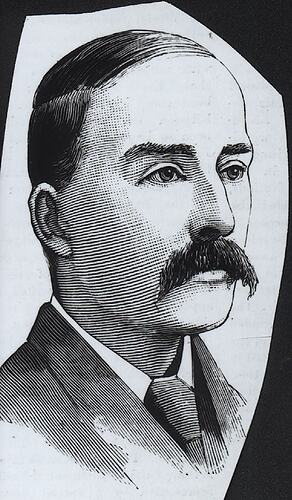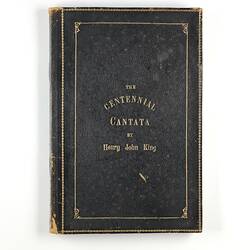Near the conclusion of the Melbourne Centennial International Exhibition, 'influential citizens' began a movement to continue the work of the Centennial Orchestra. The Centennial Orchestra had been a critical and popular success, and the Victorian Government assisted with funds for the establishment of a permanent orchestra. Parliamentary discussions concerning the merits of funding a Victorian orchestra reasoned that the establishment of such an orchestra would be a step in addressing the deemed lack of intellectual and artistic life in Melbourne at the time. (Radic 1977, vol. 1, p.65) As such, a Government subsidy of £3,000 a year was promised. (Radic 1977, vol. 1, p.63-4)
Pragmatic efforts were made to keep the Centennial Orchestra together, and Julius Herz led the orchestra for six months after Cowen returned to Britain, before conductor James Hamilton Clarke (on the recommendation of Frederick Cowen) emigrated to Australia to conduct the newly formed Victorian Orchestra. Cowen left his musical scores; they formed the basis of Victorian Orchestra's repertoire. They were later subsumed into the Marshall-Hall library. (Radic 1977, vol. 1, p.42) The Victorian Orchestra's repertoire included Weber, Schubert, Wagner and Beethoven, and some original works composed by Hamilton Clarke. Concerts were performed at both the Town Hall and the Exhibition Concert Hall. (Colligan 1996b, p.228) J. Munyard is recorded as tympani player in the Victorian Orchestra in November 1890. (Radic 1977, vol. 1, p.86)
The intention of the Victorian Orchestra was to offer enjoyable entertainment at moderate expense, and as such it attempted to perform thrice weekly. The frequency of performances and poor advertising were cited as keys to the demise of the orchestra. (Radic 1977, vol. 1, p.129) Within a year, financial and organisational issues took hold, and local papers began a drawn out debate upon the merits of keeping the orchestra going. Newspaper commentary argued that it was the uncultivated taste of the greater Melbourne populous that was the reason for the failure of the orchestra, rather than poor organisation and management. (Barrett 1941, p.2) At the 1892 farewell concert for Hamilton Clarke, the Town Hall venue was only half full, and indeed several key players did not turn up amid reports of personal conflict with Hamilton Clarke. (Radic 1977, vol 1, p.125)
References:
Barrett, James W. 1941. Outline History of Orchestral Music in Melbourne. Melbourne: printer unknown.
Colligan, Mimi. 1996b. 'Not an Ideal Concert Hall' in Victorian Icon: The Royal Exhibition Building, ed. David Dunstan. Melbourne: The Exhibition Trustees.
Radic, Maureen Therese. 1977. 'Some Aspects of Musical Associations in Melbourne 1888-1915. Unpublished PhD Thesis, University of Melbourne.
More Information
-
Keywords
-
Authors
-
Article types




